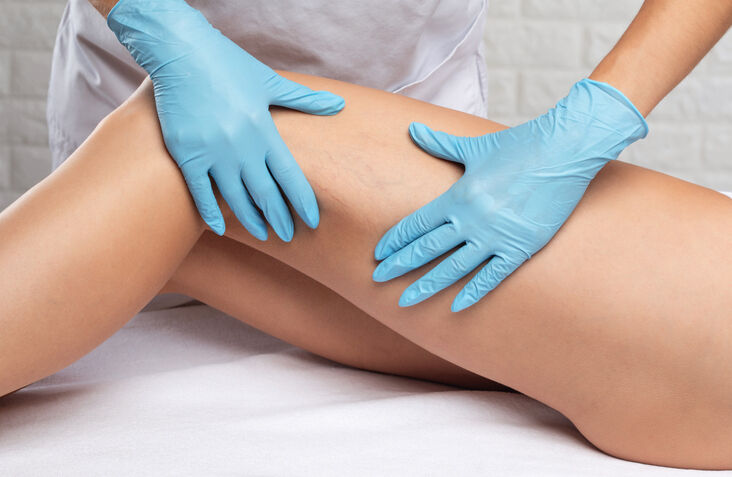
Do You Have Venous Insufficiency? Here are Seven Signs to Look For
Millions of people have venous insufficiency. Are you one of them? Here are seven signs to look for:

Medically reviewed by Duc Le. MD, on August 27, 2024
Venous ulcers are a serious complication of venous insufficiency that can significantly impact a person's quality of life. Venous insufficiency is a chronic condition where damaged or weakened valves in the leg veins struggle to send blood from the legs back to the heart.
Recognizing the early signs of a venous ulcer is crucial for timely intervention and better outcomes. In this blog, we will outline changes to the look and feel of your legs, the progressive stages of a leg ulcer, and when medical attention is necessary to stop ulcer progression from becoming a medical crisis.
The progression from venous insufficiency to ulcer formation can occur over weeks to months. Chronic venous insufficiency (CVI) is a long-term condition where weakened vein walls and damaged valves cause veins to stay filled with blood, especially when standing. Symptoms include leg discomfort, swelling, itching, or tingling in the legs, color changes around ankles, and thickening and hardening of the skin on the legs and ankles. Varicose veins are also a common symptom.
Here's how venous insufficiency can lead to a venous leg ulcer:
The development of a venous ulcer often begins with subtle changes in the skin and underlying tissues. Being aware of these early indicators can help you seek medical attention promptly:
As the condition advances, compromised skin becomes increasingly vulnerable to breakdown:
When an ulcer first forms, it typically has distinct characteristics:
Due to poor circulation and high venous pressure, these ulcers heal slowly and are prone to infection.
Recognizing these risk factors can help individuals take preventive measures:
Consult a vein specialist if you notice:
Early intervention by a venous specialist can prevent the progression of venous insufficiency and reduce the risk of ulcer formation.
At Center for Vein Restoration (CVR), our vein specialists offer advanced, minimally invasive treatment options in a comfortable outpatient setting. If you're experiencing symptoms of chronic venous insufficiency—such as leg discomfort, cramping, swelling, itching, feelings of heaviness, restless legs, skin changes, ulcers, and more—don't wait.
Early treatment is vital to avoid serious complications, such as bulging veins, leg pain, slow-healing sores, skin changes, deep vein thrombosis (DVT) blood clots, and leg ulcers.
Book an appointment today to receive the best in vein care. Call 240-965-3915 to speak to a Patient Services Representative or schedule your consultation online at a CVR near you today.

While not all venous ulcers can be prevented, several strategies can reduce risk and manage early symptoms:
Our specialized approach addresses both the underlying venous issues and the wound itself, promoting faster healing and reducing recurrence risk.
Recognizing the early signs of a venous ulcer is crucial for preventing its development and ensuring prompt treatment. By understanding what to look for and when to seek medical attention, you can take proactive steps to maintain your vein health.
At Center for Vein Restoration, we're committed to providing expert care and education to help you prevent and manage venous conditions effectively. If you're experiencing any symptoms or have concerns about your vein health, don't hesitate to contact our team of specialists. Early intervention is critical to preventing the progression of venous disease and maintaining your quality of life.
Remember, healthy veins lead to healthy legs (and a happy life!), and we're here to support you every step of the way. CVR accepts many insurances, including Aetna, Amerigroup, Anthem, Blue Cross/Blue Shield, Cigna, MultiPlan, Medicaid, Medicare, and more.
Call 240-965-3915 to speak to a Patient Services Representative or schedule your consultation online at a CVR near you today.
